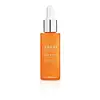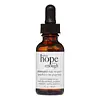What's inside
What's inside
 Key Ingredients
Key Ingredients

 Benefits
Benefits

 Concerns
Concerns

 Ingredients Side-by-side
Ingredients Side-by-side

Water
Skin ConditioningButylene Glycol
HumectantPropanediol
SolventGlycerin
HumectantRubus Chamaemorus Fruit Extract
AntioxidantRubus Chamaemorus Seed Extract
Skin ConditioningPhenoxyethanol
PreservativeBetaine
HumectantPEG-40 Hydrogenated Castor Oil
EmulsifyingSaccharide Isomerate
HumectantAscorbyl Glucoside
AntioxidantXylitylglucoside
HumectantSodium Hyaluronate
HumectantXanthan Gum
EmulsifyingAnhydroxylitol
HumectantTrehalose
HumectantUrea
BufferingDisodium EDTA
Hydrolyzed Hyaluronic Acid
HumectantMaltodextrin
AbsorbentXylitol
HumectantEthylhexylglycerin
Skin ConditioningSodium Hydroxide
BufferingSodium Citrate
BufferingAdenosine
Skin ConditioningPentylene Glycol
Skin ConditioningSerine
MaskingCitric Acid
BufferingAlgin
MaskingCaprylyl Glycol
EmollientDisodium Phosphate
BufferingGlyceryl Polyacrylate
Pullulan
Potassium Phosphate
BufferingLimonene
PerfumingLinalool
PerfumingCitral
PerfumingParfum
MaskingWater, Butylene Glycol, Propanediol, Glycerin, Rubus Chamaemorus Fruit Extract, Rubus Chamaemorus Seed Extract, Phenoxyethanol, Betaine, PEG-40 Hydrogenated Castor Oil, Saccharide Isomerate, Ascorbyl Glucoside, Xylitylglucoside, Sodium Hyaluronate, Xanthan Gum, Anhydroxylitol, Trehalose, Urea, Disodium EDTA, Hydrolyzed Hyaluronic Acid, Maltodextrin, Xylitol, Ethylhexylglycerin, Sodium Hydroxide, Sodium Citrate, Adenosine, Pentylene Glycol, Serine, Citric Acid, Algin, Caprylyl Glycol, Disodium Phosphate, Glyceryl Polyacrylate, Pullulan, Potassium Phosphate, Limonene, Linalool, Citral, Parfum
Water
Skin ConditioningPentylene Glycol
Skin ConditioningGlycerin
HumectantPalmitoyl Tetrapeptide-7
Skin ConditioningPalmitoyl Oligopeptide
CleansingGlutathione
Allantoin
Skin ConditioningAloe Barbadensis Leaf Juice
Skin Conditioning1,2-Hexanediol
Skin ConditioningPotassium Ascorbyl Tocopheryl Phosphate
AntioxidantHydrolyzed Soy Protein
HumectantCarbomer
Emulsion StabilisingButylene Glycol
HumectantPEG-7 Glyceryl Cocoate
EmulsifyingParfum
MaskingSodium Hyaluronate
HumectantSodium Hydroxide
BufferingCaprylyl Glycol
EmollientPolysorbate 20
EmulsifyingGlyceryl Polyacrylate
Limonene
PerfumingMaltodextrin
AbsorbentPotassium Sorbate
PreservativeEthylhexylglycerin
Skin ConditioningDisodium EDTA
Chlorphenesin
AntimicrobialBHT
AntioxidantPhenoxyethanol
PreservativeWater, Pentylene Glycol, Glycerin, Palmitoyl Tetrapeptide-7, Palmitoyl Oligopeptide, Glutathione, Allantoin, Aloe Barbadensis Leaf Juice, 1,2-Hexanediol, Potassium Ascorbyl Tocopheryl Phosphate, Hydrolyzed Soy Protein, Carbomer, Butylene Glycol, PEG-7 Glyceryl Cocoate, Parfum, Sodium Hyaluronate, Sodium Hydroxide, Caprylyl Glycol, Polysorbate 20, Glyceryl Polyacrylate, Limonene, Maltodextrin, Potassium Sorbate, Ethylhexylglycerin, Disodium EDTA, Chlorphenesin, BHT, Phenoxyethanol
 Reviews
Reviews

Ingredients Explained
These ingredients are found in both products.
Ingredients higher up in an ingredient list are typically present in a larger amount.
Butylene Glycol (or BG) is used within cosmetic products for a few different reasons:
Overall, Butylene Glycol is a safe and well-rounded ingredient that works well with other ingredients.
Though this ingredient works well with most skin types, some people with sensitive skin may experience a reaction such as allergic rashes, closed comedones, or itchiness.
Learn more about Butylene GlycolCaprylyl Glycol is a humectant and emollient, meaning it attracts and preserves moisture.
It is a common ingredient in many products, especially those designed to hydrate skin. The primary benefits are retaining moisture, skin softening, and promoting a healthy skin barrier.
Though Caprylyl Glycol is an alcohol derived from fatty acids, it is not the kind that can dry out skin.
This ingredient is also used as a preservative to extend the life of products. It has slight antimicrobial properties.
Learn more about Caprylyl GlycolDisodium EDTA plays a role in making products more stable by aiding other preservatives.
It is a chelating agent, meaning it neutralizes metal ions that may be found in a product.
Disodium EDTA is a salt of edetic acid and is found to be safe in cosmetic ingredients.
Learn more about Disodium EDTAEthylhexylglycerin (we can't pronounce this either) is commonly used as a preservative and skin softener. It is derived from glyceryl.
You might see Ethylhexylglycerin often paired with other preservatives such as phenoxyethanol. Ethylhexylglycerin has been found to increase the effectiveness of these other preservatives.
Glycerin is already naturally found in your skin. It helps moisturize and protect your skin.
A study from 2016 found glycerin to be more effective as a humectant than AHAs and hyaluronic acid.
As a humectant, it helps the skin stay hydrated by pulling moisture to your skin. The low molecular weight of glycerin allows it to pull moisture into the deeper layers of your skin.
Hydrated skin improves your skin barrier; Your skin barrier helps protect against irritants and bacteria.
Glycerin has also been found to have antimicrobial and antiviral properties. Due to these properties, glycerin is often used in wound and burn treatments.
In cosmetics, glycerin is usually derived from plants such as soybean or palm. However, it can also be sourced from animals, such as tallow or animal fat.
This ingredient is organic, colorless, odorless, and non-toxic.
Glycerin is the name for this ingredient in American English. British English uses Glycerol/Glycerine.
Learn more about GlycerinWe don't have a description for Glyceryl Polyacrylate yet.
Limonene is a fragrance that adds scent and taste to a formulation.
It's found in the peel oil of citrus fruits and other plants such as lavender and eucalyptus. The scent of limonene is generally described as "sweet citrus".
Limonene acts as an antioxidant, meaning it helps neutralize free radicals.
When exposed to air, oxidized limonene may sensitize the skin. Because of this, limonene is often avoided by people with sensitive skin.
The term 'fragrance' is not regulated in many countries. In many cases, it is up to the brand to define this term. For instance, many brands choose to label themselves as "fragrance-free" because they are not using synthetic fragrances. However, their products may still contain ingredients such as essential oils that are considered a fragrance.
Learn more about LimoneneMaltodextrin is a polysaccharide. It is derived from starch such as rice, corn, wheat, or potato starch.
In food, Maltodextrin is used to improve the texture and thicken a product. Due to its structure, it can help create a gel texture. As an emulsion stabilizer, it helps keep the ingredients in a product together.
As a polysaccharide, Maltodextrin has moisturizing properties. Polysaccharides are a type of carbohydrate. The top layer of skin uses polysaccharides to retain water, keeping the skin hydrated.
Maltodextrin is water soluble and has a sweet taste.
Learn more about MaltodextrinParfum is a catch-all term for an ingredient or more that is used to give a scent to products.
Also called "fragrance", this ingredient can be a blend of hundreds of chemicals or plant oils. This means every product with "fragrance" or "parfum" in the ingredients list is a different mixture.
For instance, Habanolide is a proprietary trade name for a specific aroma chemical. When used as a fragrance ingredient in cosmetics, most aroma chemicals fall under the broad labeling category of “FRAGRANCE” or “PARFUM” according to EU and US regulations.
The term 'parfum' or 'fragrance' is not regulated in many countries. In many cases, it is up to the brand to define this term.
For instance, many brands choose to label themselves as "fragrance-free" because they are not using synthetic fragrances. However, their products may still contain ingredients such as essential oils that are considered a fragrance by INCI standards.
One example is Calendula flower extract. Calendula is an essential oil that still imparts a scent or 'fragrance'.
Depending on the blend, the ingredients in the mixture can cause allergies and sensitivities on the skin. Some ingredients that are known EU allergens include linalool and citronellol.
Parfum can also be used to mask or cover an unpleasant scent.
The bottom line is: not all fragrances/parfum/ingredients are created equally. If you are worried about fragrances, we recommend taking a closer look at an ingredient. And of course, we always recommend speaking with a professional.
Learn more about ParfumPentylene glycol is typically used within a product to thicken it. It also adds a smooth, soft, and moisturizing feel to the product. It is naturally found in plants such as sugar beets.
The hydrophilic trait of Pentylene Glycol makes it a humectant. As a humectant, Pentylene Glycol helps draw moisture from the air to your skin. This can help keep your skin hydrated.
This property also makes Pentylene Glycol a great texture enhancer. It can also help thicken or stabilize a product.
Pentylene Glycol also acts as a mild preservative and helps to keep a product microbe-free.
Some people may experience mild eye and skin irritation from Pentylene Glycol. We always recommend speaking with a professional about using this ingredient in your routine.
Pentylene Glycol has a low molecular weight and is part of the 1,2-glycol family.
Learn more about Pentylene GlycolPhenoxyethanol is a preservative that has germicide, antimicrobial, and aromatic properties. Studies show that phenoxyethanol can prevent microbial growth. By itself, it has a scent that is similar to that of a rose.
It's often used in formulations along with Caprylyl Glycol to preserve the shelf life of products.
Sodium Hyaluronate is hyaluronic acid's salt form. It is commonly derived from the sodium salt of hyaluronic acid.
Like hyaluronic acid, it is great at holding water and acts as a humectant. This makes it a great skin hydrating ingredient.
Sodium Hyaluronate is naturally occurring in our bodies and is mostly found in eye fluid and joints.
These are some other common types of Hyaluronic Acid:
Learn more about Sodium HyaluronateSodium Hydroxide is also known as lye or caustic soda. It is used to adjust the pH of products; many ingredients require a specific pH to be effective.
In small amounts, sodium hydroxide is considered safe to use. However, large amounts may cause chemical burns due to its high alkaline.
Your skin has a natural pH and acid mantle. This acid mantle helps prevent harmful bacteria from breaking through. The acid mantle also helps keep your skin hydrated.
"Alkaline" refers to a high pH level. A low pH level would be considered acidic.
Learn more about Sodium HydroxideWater. It's the most common cosmetic ingredient of all. You'll usually see it at the top of ingredient lists, meaning that it makes up the largest part of the product.
So why is it so popular? Water most often acts as a solvent - this means that it helps dissolve other ingredients into the formulation.
You'll also recognize water as that liquid we all need to stay alive. If you see this, drink a glass of water. Stay hydrated!
Learn more about Water